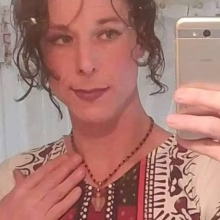In October 2014, a bisexual black male resident of Lawrenceville was murdered in his home and his body then dumped in the Allegheny River where he remained undiscovered for four months. His name was Andre Gray. In addition to this crime, his dog was killed and his home ransacked, his belongings stolen and his vehicle abandoned after being set on fire.
Two men, both alleged acquaintances of Andre, are facing charges and the trial of Raymond Schifino began this week in the Court of Common Pleas. From the Post-Gazette (warning, the details are rather gruesome):
Schifino pleaded guilty to theft, receiving stolen property, cruelty to animals, abuse of a corpse, reckless burning and receiving stolen property.
As part of the plea deal, which will land him a sentence of two to six years in prison, Schifino agreed to testify against Wingate in his nonjury trial, which began just a few minutes later before Allegheny County Common Pleas Judge Joseph K. Williams III.
Wingate, 31, is accused of killing Mr. Gray, 34, either late Oct. 22 or early Oct. 23, 2014, in the victim’s apartment.
Schifino’s sentencing is scheduled for April. Wingate’s non-jury trial continues.
We still don’t know why Wingate targeted Andre. And that’s an important detail as well as the reason I wrote this blog post update that only contains gruesome details and a little bit of plea information.
Last week, a 23 year old trans man was killed by a police officer in Sharon, a small town in Mercer County. His name was Sean Hake. Details are sketchy beyond the fact that police were responding to a 911 call, Sean is dead and no one else was injured. The Mercer County DA insists that we all stop speculating and wait for the internal investigation to conclude. So we wait.
But the problem is that since 2014, I’ve identified at least seven LGBTQ people in Western Pennsylvania who have died from gun violence. Six were QTPOC. One was a white trans man.
Seven members of our community in a little more than two years. Back in early December when blogging about the murder of Shanique Saunders, I suggested that six was an epidemic to little response. So what about seven – just over a month later, we are at seven.
- Omar Islam, 21, October 2013.
- Andre Gray, 33, October 2014
- Unnamed individual, 33, 2014
- Unnamed individual, under 18, 2016
- Dalia Sabae, 28, November 2016
- Shanique Saunders, 23, November 2016
- Sean Hake, 23, January 2017
Omar’s killers wanted his shoes and/or cell phone. The two unnamed individuals were allegedly shot because of drug deals – however you interpret that. Dalia’s husband murdered her after ongoing physical abuse. Shanique was shot by a friend who robbed her body and fled. Sean was shot by a police officer. We don’t know Andre was killed. Yet.
And these are just the people that I actually know have been killed and identified as LGBTQ. I’m sure there are more, names we’ll never speak and stories we’ll never know. We need to find a way to shake off this ennui and wearying fear that marriage equality is what we stand to lose when it is so very apparent that we have already lost far more – our neighbors, our friends. They are dying not necessarily directly because they are LGBTQ, but they are dying and they are LGBTQ and we must pay attention.
We are losing them and sitting by idly wringing our hands with fear that people might think there’s a secret agenda at work when we demand that the media, the police, the DA and the public acknowledge someone’s actual identity. What an outrage – to demand accuracy and depth.
To say their names, even when we don’t have their names, is our obligation as their survivors. As witnesses to their lives and deaths and all that comes in between – read the life eperiences of nearly 190 LGBTQ neighbors to fill in the gaps in what we know.
It is imperative that we make ourselves visible, not wait to be acknowledged by those who would prefer to not see us in all our stark realness. There’s no hierarchy of martyrdom that makes the death of one LGBTQ person worse or more unfair or less warranted than another. Where one person might pillory us for sexual promiscuity, another sees street life or failure to be a good wife or honor a family or simply indulging in the luxury of nice shoes. The room for criticism is wider than we like to think.
It doesn’t take a hard look around this region to see a scarcity of resources and supports, clustered mostly in Pittsburgh and to a much lesser extent in Erie. Our lives are complicated and messy and contradictions, but we are here – we survive and even thrive in spite of all of that.
But not all of us. And that’s the reality we must also make visible.

Discover more from Pittsburgh Lesbian Correspondents
Subscribe to get the latest posts sent to your email.








You must be logged in to post a comment.